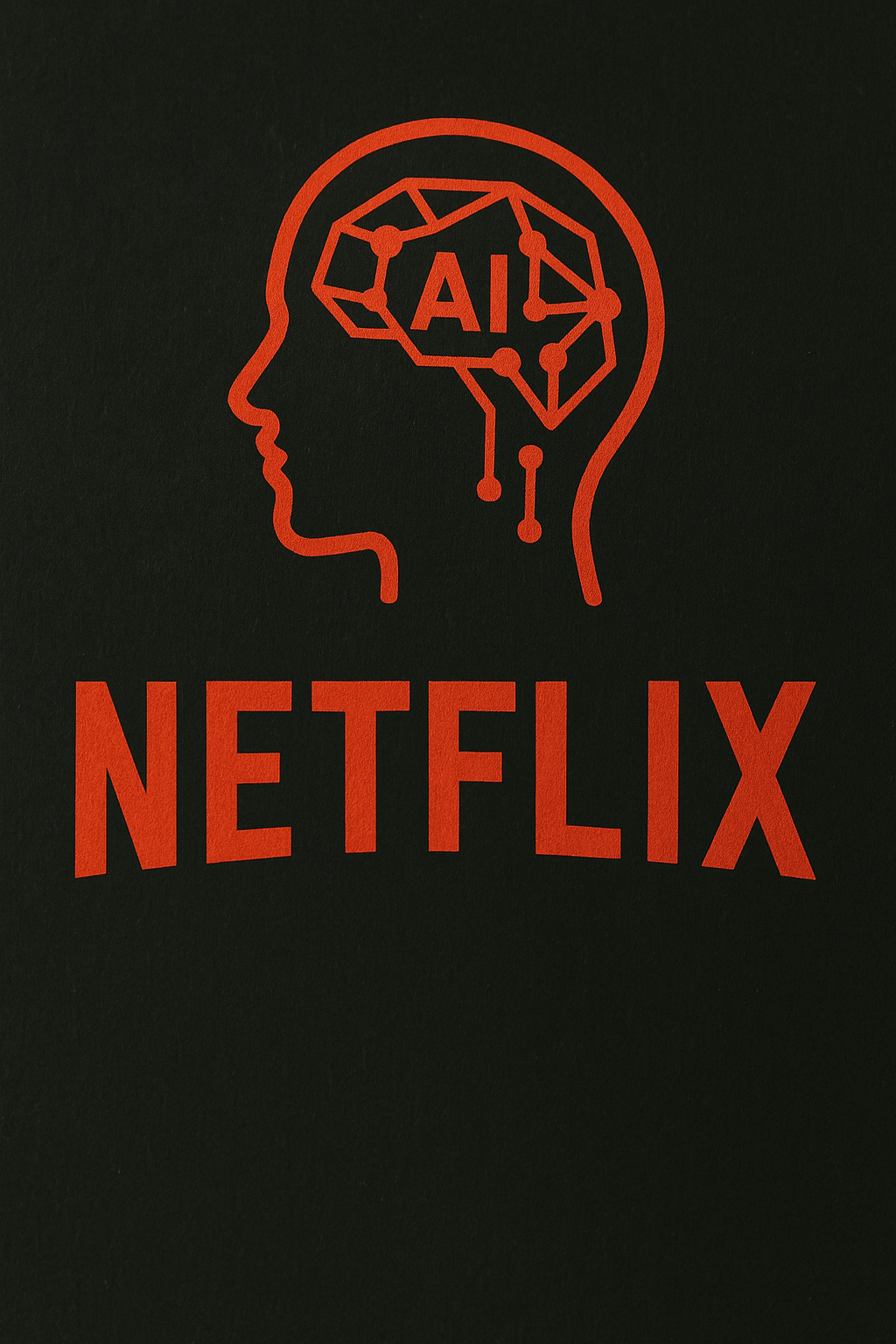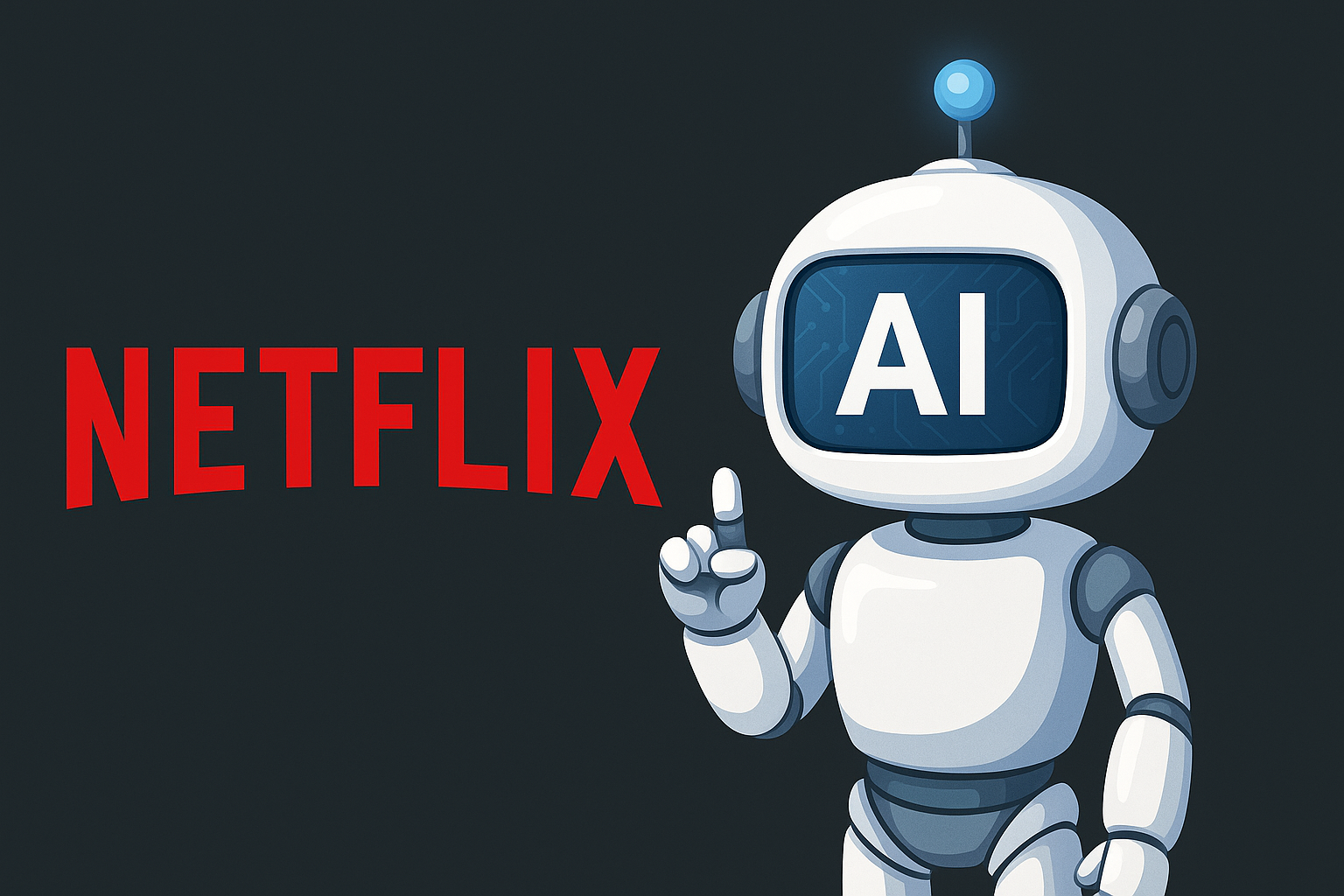Netflix has officially set rules for how filmmakers can use generative AI in productions. The streaming giant, fresh off revealing AI-generated footage in one of its originals, now wants tighter control over when and how the technology enters its content pipeline. The new Netflix AI production guidelines are a turning point for studios, directors, and VFX teams experimenting with automation.
What’s Happening & Why This Matters
Netflix confirmed that its production partners must follow new AI usage guidelines before any generative tool appears in their work. According to reporting from The Wrap, the company now requires filmmakers to notify the platform about AI use. If the AI-generated output fits the approved conditions, a quick heads-up is enough. If it doesn’t, written approval from Netflix is mandatory.
The platform outlined several core principles. AI outputs must not replicate or recreate identifiable characteristics of copyrighted material, nor can they infringe existing intellectual property. Generative tools cannot store, reuse, or train on production inputs, protecting proprietary scripts and footage from leaking into third-party systems. Whenever possible, Netflix expects AI work to happen in enterprise-secured environments, and generated material should stay temporary — meaning it cannot make up the final deliverables, aligning with AI production guidelines.

Another hard line: generative AI cannot replace talent performances or union-covered work without consent. That restriction arrives during ongoing debates in Hollywood about protecting actors, writers, and creatives from unauthorized digital duplication. Netflix also prohibits using AI to create main characters, fictional worlds, or digital likenesses of real people unless explicit approval is granted. Recreating real-world events, statements, or people with generative AI is banned altogether as per Netflix’s AI production guidelines.
“Audiences should be able to trust what they see and hear on screen,” Netflix said in its guidance. “If used without care, GenAI can blur the line between fiction and reality or unintentionally mislead viewers.”
These restrictions come after criticism last year when the company used AI-generated images in its true-crime documentary What Jennifer Did. More recently, Netflix deployed AI to show a collapsing building in the Argentinian series The Eternaut. Co-CEO Ted Sarandos defended the move, noting the sequence was completed “10x faster” than traditional VFX work.
Voices outside Netflix are also weighing in. James Cameron, director of Avatar, called generative AI a potential accelerator for filmmaking, saying it can double production speed for visual sequences, allowing artists to focus on higher-value creative work. The impact of AI production guidelines is significant in this context.
The push to integrate AI while setting limits reflects the wider entertainment industry’s balancing act. Studios see cost savings and efficiency, but unions and creatives demand transparency and guardrails. Netflix’s new rules are an attempt to draw those lines before controversy expands.
TF Summary: What’s Next
Netflix is not banning AI from production, but it wants strict oversight. The company is betting that clear rules will keep artists protected while giving studios faster ways to manage VFX. Whether these policies calm Hollywood’s concerns — or invite more pushback from creators and unions — remains to be seen.
For now, Netflix’s message is simple: AI can help, but only if it stays in check, in line with their production guidelines.
— Text-to-Speech (TTS) provided by gspeech


